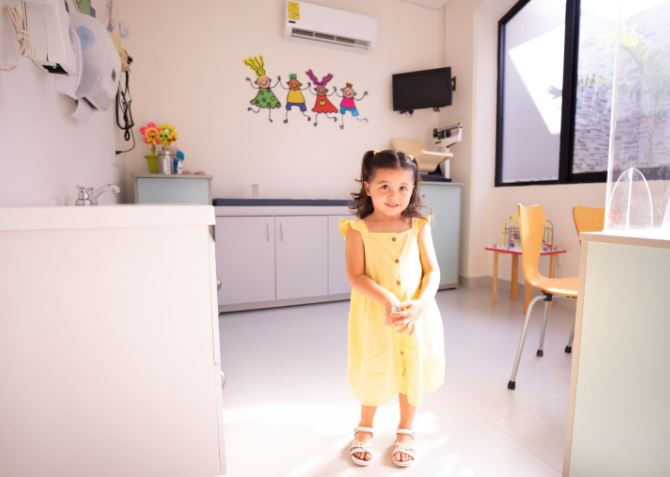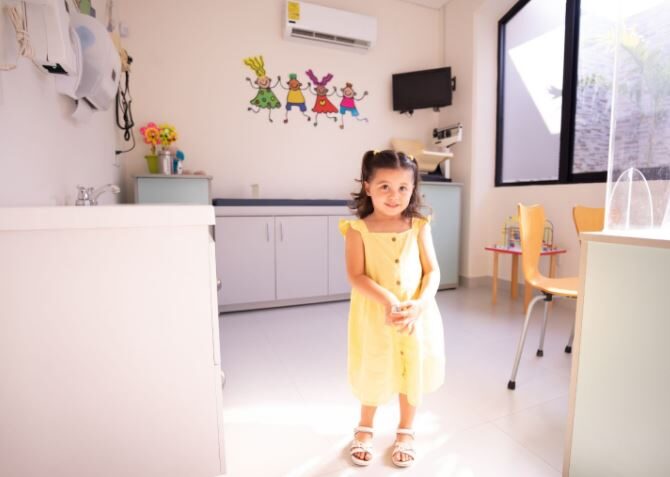Knowing when your children are in pain and seeing a doctor is something many parents worry about. Missing the tell-tale signs that there is something wrong can be devastating. However, taking up your doctor’s time due to issues that can be dealt with at home is also a worry. Many parents are concerned that they aren’t doing enough. It is only natural to worry.

One way to avoid this is to make sure you have regularly scheduled checkups with your pediatrician, who can advise you on anything they feel is an issue and refer you to a specialist who can help you. In many cases, those chances are the referral is made due to an emergency appointment concerning an accident or increased pain levels.
Pediatric orthopedics is a medical specialty that focuses on treating children’s joints, muscles, and bones. A pediatric orthopedist is a doctor who specializes in treating these areas in children ranging in age from infancy to adolescence. One such specialist is a pediatric orthopedic surgeon.
Pediatric orthopedists (also known as a pediatric orthopedic specialist) can perform surgery when necessary, but they also offer non-surgical treatments such as casts or limb braces.
How do you know when your child needs to see a pediatric orthopedist?
Your child’s body will constantly be changing and growing until they reach adulthood. It is important to distinguish between typical growing pains and pain caused by medical conditions that need treatments. Typically your pediatrician will advise you of further treatment upon an initial examination and tests and refer you should they feel your child’s pain warrants further investigation and treatment that is out of their specialty and knowledge.
What Should You Do Before Your Appointment
It can be helpful for you and your child to sit down and talk about the type of pain symptoms they are experiencing, especially if they are younger, and write down anything that is bothering them and how it is impacting their quality of life. This will help you to avoid forgetting anything that could be important, especially if you are overly anxious. Reassure your child and let them know the doctor is only there to help them, but doing their job may cause them some discomfort as they check over their body. Let them know it is ok to speak up if they are hurting or have something important they feel the doctor needs to know about their condition.
The conditions that necessitate this type of referral include;
Morning Stiffness and Pain
As adults, we have all experienced that feeling of being sore and stiff after waking up and taking a moment to get moving. This is only natural as we get older. However, this shouldn’t be an issue in children and teens unless they have slept awkwardly or for too long. Usually, this will wear off within a few hours or a day, and everything will be fine. However, if this type of pain and stiffness continues and starts to interfere with their day-to-day activities or becomes more than just a stiff neck upon waking, then this could point to conditions such as juvenile arthritis and will need looking at instantly.
Persistent Pain
Aches and pain are normal and are part of everyday life. Our bodies aren’t impervious to pain during our youth, and from time to time, pain from accidents or injury or simply for no reason should be expected. Pain that is persistent or chronic is a pain that lasts for longer than a few days and with no obvious cause. This could indicate that there is something wrong, and an orthopedic specialist can help you identify the cause of any pain related to bone growth or joints.
Breaks and Fractures
One of the most common ailments in children is broken bones. There are many reasons why a child can experience a broken bone. As such, getting the bone reset as quickly as possible is vital to help avoid any long-term issues and allow your child to regain full health and use the body part where the break was sustained.
Sports Injuries
If your child is a fan of playing sports both for leisure or for an amateur team to go professional, chances are, as a parent, you will watch them sustain different injuries over the years. Depending on the sport they play, there are many different injuries children can sustain. This could lead them to need the expertise of an orthopedic surgeon who can assist them in their recovery.
Scoliosis
Scoliosis is a lateral curvature of the spine’s normally straight vertical line. The spine has a mild roundness in the upper back and an inward curvature in the lower back when viewed from the side. Idiopathic scoliosis is the most common type; it is present at birth and may be inherited. Neuromuscular scoliosis and degenerative scoliosis are two other types. Idiopathic scoliosis typically affects people between the ages of 10 and 16, progressing during the growth years.
Uneven shoulders, a prominent shoulder blade, an uneven waist, or leaning to one side are signs that a child may have scoliosis. A bone exam and an X-ray are used to determine the magnitude of the curve. Scoliosis treatment includes back braces and, in more severe cases, a surgery that involves permanently joining the vertebrae together (spinal fusion).
Other conditions which can be treated by a pediatric orthopedist include;
- Abnormalities in the growth period
- Ankle or foot injuries
- Nerve injuries
- Limb deformities
- Spinal issues
- Walking problems
- Bone or joint infections
The important thing to remember is not to worry should your doctor feel a referral is required. Preparing both yourself and your child for what happens next is a great way to alleviate fears and remove any unwanted questions or scenarios from the appointment, as in many cases, the unknown is far more worrying than the reason for the appointment itself.

